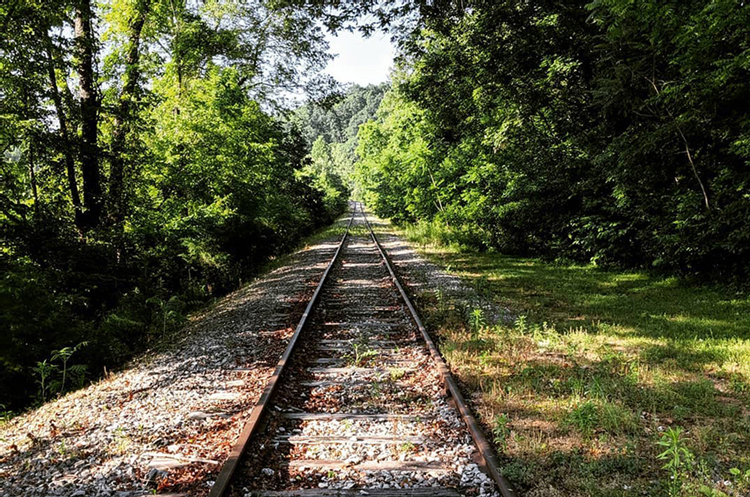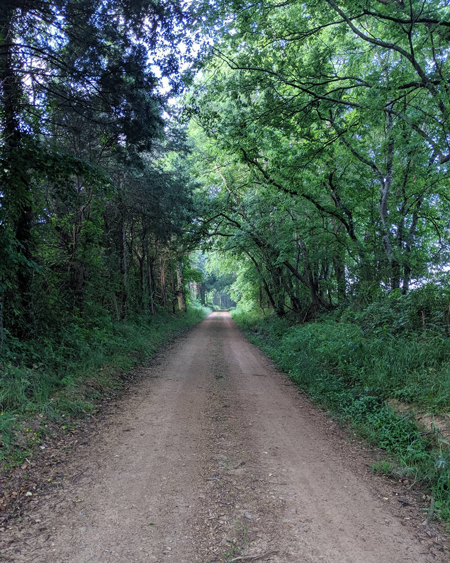
I've been traveling for a little over a week now, and I've fallen into a rhythm: wake up at 4:30 a.m., make coffee, and wake up slowly in the dawn light. Pack up my tent and sleeping bag and re-situate my back pack so I'm on the road by sunrise at 5:30 a.m. in order to beat the heat of the day. To sleep and rise with the sun is new for me. I've always liked staying up late. But, I'm discovering that it's not so much the night I like, but being awake when no one else is.
I walk 5 to 20 miles daily, depending on the terrain, my fatigue, and the availability of reasonable camping spots. I try to find a spot, or at least a general area, by noon and settle down to nap and read and write and see what's to see in the area.

Ideally, I would always find a dense wood so that no one would know I was there. The underbrush would be sparse and a clean spring would run close by, good for quick-filtered water and washing clothes and myself. And while that scene does happen with some frequency, it's just as likely I'll make camp in a sparse wood on the other side of a highway embankment, or in a dilapidated public park, or after clearing away snake and bug and thorn-infested underbrush from impassibly thick scrub land. Or, I won’t find any spots that feel safe, and I'll wait until nightfall to set up camp in a dark, inhospitable but hidden spot, and I'll set up camp without a headlamp and leave before first light.
There is a certain clarity that comes from a combination of fear and fatigue. This inconvenience, discomfort, and fear are not just a necessary byproduct of this trip, but rather one of the points. I know that Sarah would have faced much worse on her walk west, and rather than just research or imagine, I wanted to put my body through some version of the real fear, real vulnerability, and real danger she must have faced between Tennessee and Arkansas.
For my purposes, it's a gift that this land hasn’t changed all that much in 150 years. There's still nowhere to buy food for many days at a time, and the plots of land are still divided by wandering tree lines, or old stone walls. There is none of the geometry of the Midwest, or the wealth that comes from corporate farms. Middle Tennessee is a land passed over in many ways, like much of the South.
But, the differences between my trip and Sarah's still overwhelm the similarities. There are roads, cars, more people, cell phones. There are not starving soldiers in the woods, or runaway enslaved people trying desperately not to be seen. I buy, carry, and cook my food on a portable stove, rather than hunt and gather and make a fire if possible in this chronically soggy land.
And, most significantly, I have a safety net—people following me via GPS, phone service most days, and the knowledge that if I needed to bail, I could. It was foolish, I now realize, to think that this trip in any ways emulates that of my Great-Great-Great-Grandmother.
I understand now that this is not a re-creation, but a devotional. It is a pilgrimage to honor the movement and bravery of the woman who traveled a great distance to start my family. Throughout this trip, in my interactions with wildlife, with locals, with the texts I'm reading, and with my own body, Sarah is always on my mind. I overlay onto everything my evolving understanding of her, and of her daughter, Jennie, and of her daughter, Theodora, and of her daughter, Marianne, who was my grandmother. By my memories, stories, and my wandering stabs at researching people who are lost, I feel us cinching closer together. I still don't exactly know what I'm doing out here, but I feel close.